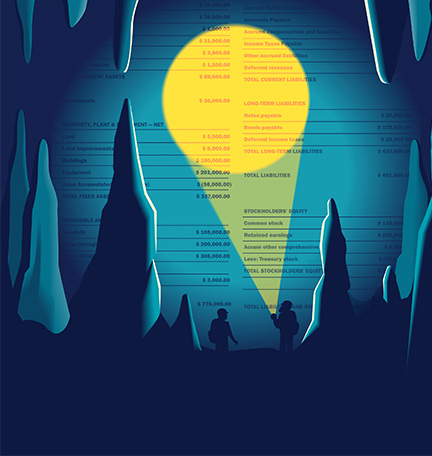The retirement transition process can be a disorienting one, but a detailed financial plan can help you make the change gracefully.
The shift from the working and saving phase of your life to the retired and spending phase can be an emotional and financial rollercoaster. And the time immediately around that pivot can test even the most seasoned investor.
Many people feel lost when they transition to retirement. They are met with giving up their professional identity, not to mention their regular paycheck. At the same time, the financial demands of retirement can be tough to wrap your mind around. Many people get the investment jitters on the eve of retirement and want to pull all of their money from investments like stocks, locking everything up in the safety of bank accounts and within bonds, says Tracey Armitage, Regional Manager for Regions Portfolio Management.
“You won’t need all of your money on the day you retire—you’ll be slowly drawing it down over the course of 20 to 40 years,” she notes. That’s why trying to eliminate all risk in your portfolio prior to retirement can create risks of its own. Most notably, your investment returns might not keep pace with inflation, diminishing your buying power with each year that passes.
So how do you transition to retirement without going off the rails?
Plan early and often
The most important thing is to start creating a plan for your retirement transition at least five to 10 years in advance, says Travis LeMonte, a Regional Executive with Regions Private Wealth Management.
Early planning gives you time to catch up—or adjust your retirement date—if your savings and investment strategy is inadequate for the retirement you want. It also allows you to start investing in different types of accounts—taxable, tax-free and tax-deferred—that will give you more flexibility in retirement.
Planning is also a chance to start to paint in the details of your retirement picture. When and where will you retire? Do you want your home to be paid off, or can you handle a mortgage or rent? What do you plan to do—travel, golf or volunteer your time? Diving into these details will help you create a long-term spending and investment plan, and can ease the shock of change by making this new life more familiar—at least on paper.
LeMonte notes that planning isn’t a one-time event. After you draw up a plan, you should revisit it at least once annually. “It’s like going to the doctor for an annual physical. You need to make sure you address anything that’s changed in the past 12 months.”
Do a stress test
One reason people tend to invest too conservatively on the cusp of retirement is that they’re worried about what a market downturn might mean for them. Knowing that it would be tough to return to work in such a situation, they simply don’t want to take any investment risk.
“But another approach may be to stress test your portfolio,” Armitage says. You do this by first determining the gap between your reliable, paycheck-like sources of retirement income, such as pensions and Social Security, and the amount you plan to spend. Most people should expect to spend about as much as they do now, as shopping and travel often replace work expenses.
That gap—between your spending and your regular income—is where your investment portfolio comes in. So now you evaluate that portfolio and see how much of a hit it could sustain from a prolonged bear market, and still provide you with the monthly income you’ll need. At the same time, see how that same portfolio would serve you in a conservative low-risk, low-return portfolio, factoring in inflation. Armitage also suggests you consider “longevity risk,” or what would happen to your plan if you live far longer than you expect.
These tests should help ensure that you’re taking enough risk to keep your portfolio growing enough to fund your goals, in almost any market condition, but no more risk than necessary. It should also quiet your investment fears, allowing you to stick with your smart investment strategy even during tough markets.
Make your withdrawals tax-efficient
Ideally, you will have several different types of accounts by the time you transition to retirement, such as IRAs and 401(k)s, Roth IRAs and taxable accounts. When you start pulling money out to live on, you want to keep an eye on which account the money is coming from to manage your income tax rate. After all, it’s not how much you have, it’s how much you keep—after paying Uncle Sam—that matters.
In years that you are going to spend more—to buy a vacation home or fund your child’s wedding—you might want to dip into Roth IRAs, which provide tax-free withdrawals. In years that you spend less, you can take more out of accounts that are taxed more heavily, since you’re still likely to be in a lower tax bracket.
Be smart but flexible
Life has a way of throwing curve balls. That doesn’t mean you should abandon your plan, but you might want to adjust it. If something big happens—you get divorced, the market drops, or you are diagnosed with a serious illness—seek out your advisors right away.
"If you’re ahead of the curve, you only need to adjust at the margins, which is a lot easier," says LeMonte. "You want to be proactive, not reactive."











